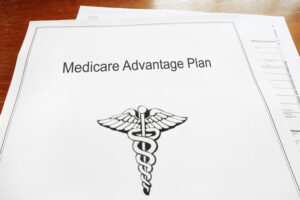
Medicare Advantage enrollees now account for just over half of all Medicare beneficiaries for the first time in history, a recent analysis found.
The Kaiser Family Foundation (KFF) report, published Monday, relied on data from the CMS Medicare Advantage Enrollment files and the CMS Medicare Enrollment Dashboard.

With the Rise of AI, What IP Disputes in Healthcare Are Likely to Emerge?
Munck Wilson Mandala Partner Greg Howison shared his perspective on some of the legal ramifications around AI, IP, connected devices and the data they generate, in response to emailed questions.
KFF found that out of 59.82 million people with Medicare Part A and Part B in January 2023, 30.19 million people were enrolled in Medicare Advantage plans, which are offered by private insurance companies.
Medicare Advantage enrollment has steadily increased over the last several years. In 2007, Medicare Advantage enrollees only represented 19% of total Medicare beneficiaries, according to KFF. A report from the organization last year found that Medicare Advantage enrollment reached 48% of all Medicare beneficiaries, and KFF even predicted then that Medicare Advantage would become the predominant form of Medicare coverage by 2023.
There are several reasons why enrollment in Medicare Advantage plans has increased, KFF said.
“The growth in enrollment is due to a number of factors, including the attraction of extra benefits offered by most plans, such as vision, hearing, and dental services, and the potential for lower out-of-pocket spending, particularly compared to traditional Medicare without supplemental coverage,” the researchers said in the report. “Medicare Advantage plans also offer the simplicity of one-stop shopping, in that enrollees do not need a separate Part D prescription drug plan or supplemental coverage.”
Overall, there aren’t many differences between Medicare Advantage and traditional Medicare, a separate KFF report published in September found. The two forms of coverage perform similarly on quality measures, and there are no major differences in the amount of time beneficiaries spend in the hospital for common medical admissions. However, Medicare Advantage enrollees are more likely to have a usual source of care and receive preventive care, whereas traditional enrollees are more likely to receive home health services, post-acute skilled nursing or inpatient facility care.
Medicare Advantage plans also engage in practices like prior authorization, which requires patients to gain approval from health plans for certain medical services before they receive the care. Physicians often say prior authorization unnecessarily delays care, while insurers often argue the practice is needed to reduce costs. KFF recently found that 35.2 million prior authorization requests were submitted to Medicare Advantage plans in 2021, and 2 million of those were denied.
Photo: zimmytws, Getty Images














